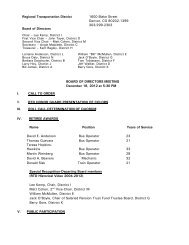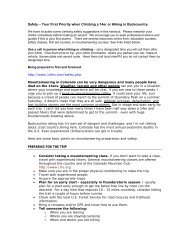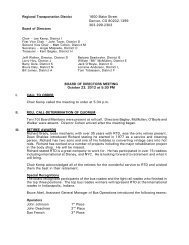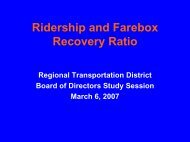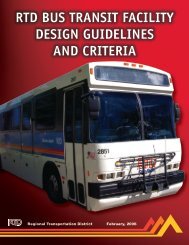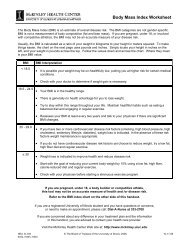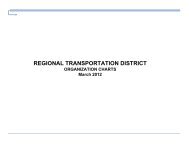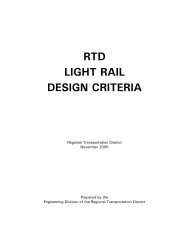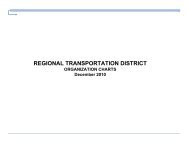Commuter Rail AC Electrification Load-Flow Simulation Report - RTD
Commuter Rail AC Electrification Load-Flow Simulation Report - RTD
Commuter Rail AC Electrification Load-Flow Simulation Report - RTD
You also want an ePaper? Increase the reach of your titles
YUMPU automatically turns print PDFs into web optimized ePapers that Google loves.
<strong>Commuter</strong> <strong>Rail</strong> <strong>AC</strong> <strong>Electrification</strong> <strong>Load</strong>-<strong>Flow</strong> <strong>Simulation</strong> <strong>Report</strong> Revision 1<br />
9.3 TR<strong>AC</strong>TION POWER DISTRIBUTION SYSTEM<br />
9.3.1 Overhead System Conductors<br />
The traction power substations will distribute power along the system route by the<br />
feeder/catenary system. The traction power distribution system considered in the study<br />
consisted of the following conductors:<br />
• Feeder Conductor, 556.5 kcmil, Aluminum Cable Steel Reinforced (<strong>AC</strong>SR) Wire<br />
• Messenger Conductor, 4/0 A.W.G., Stranded Hard-Drawn (H. D.) Copper Wire<br />
• Contact Conductor, 4/0 A.W.G., Grooved H. D. Copper Wire<br />
The study demonstrated that this, or similar, configuration of the distribution system would be<br />
suitable for electrification of the three <strong>RTD</strong> corridors as it would be capable to carry the<br />
envisioned load currents for both normal and contingency operations, including a section of<br />
track out of service. The conductor configuration of the overhead feeder and catenary systems<br />
should be confirmed by the catenary system design team.<br />
9.3.2 Paralleling and Switching Stations<br />
The proposed distribution system will be equipped with six paralleling stations and one<br />
switching station. Each paralleling station will include one autotransformer while the switching<br />
station will include two autotransformers. All autotransformers will utilize a 50 kV primary<br />
winding and 25 kV secondary winding. It is proposed that each autotransformer be rated at a<br />
continuous rating of 2.5 MVA. The overload ratings are shown in Table 4.<br />
The autotransformers transform the 50 kV feeder/catenary voltage to the 25 kV catenary/rail<br />
voltage. The autotransformers will be connected to the traction power distribution system via a<br />
medium voltage indoor switchgear line-up or outdoor circuit breakers enabling equipment<br />
protection, emergency operation, and maintenance.<br />
Additional simulations with autotransformers out of service in paralleling station PS-5 and PS-6<br />
were performed to investigate the strength of the power distribution system. In both studies the<br />
voltages were well above the study limits. Therefore, only one autotransformer is sufficient for<br />
each of the paralleling station. Further, the locations of the paralleling stations can be changed<br />
to suit operational requirements or real estate availability.<br />
9.3.3 Distribution System Design and Protection<br />
The distribution system switchgear and circuit breakers are constructed and tested in<br />
accordance with IEEE 37 series of standards. Typically, vacuum or SF 6 types of circuit<br />
breakers are used.<br />
The traction power distribution system is recommended to be protected by three-zone distance<br />
protective relays. Modern relays have completely independent and adjustable resistive and<br />
reactive reach settings and are capable of operating with forward and backward reach. The<br />
zone 1 typically operates in one cycle while zones 2 and 3 have adjustable time delays and train<br />
start detection using di/dt, dv/dt, and dφ/dt functions. Other features include polygonal<br />
characteristic, two-stage backup overcurrent protection, thermal overload protection, and a fault<br />
locator unit capable of indicating fault distance from the relay.<br />
02/27/2009 FRSC Page 30 of 250




